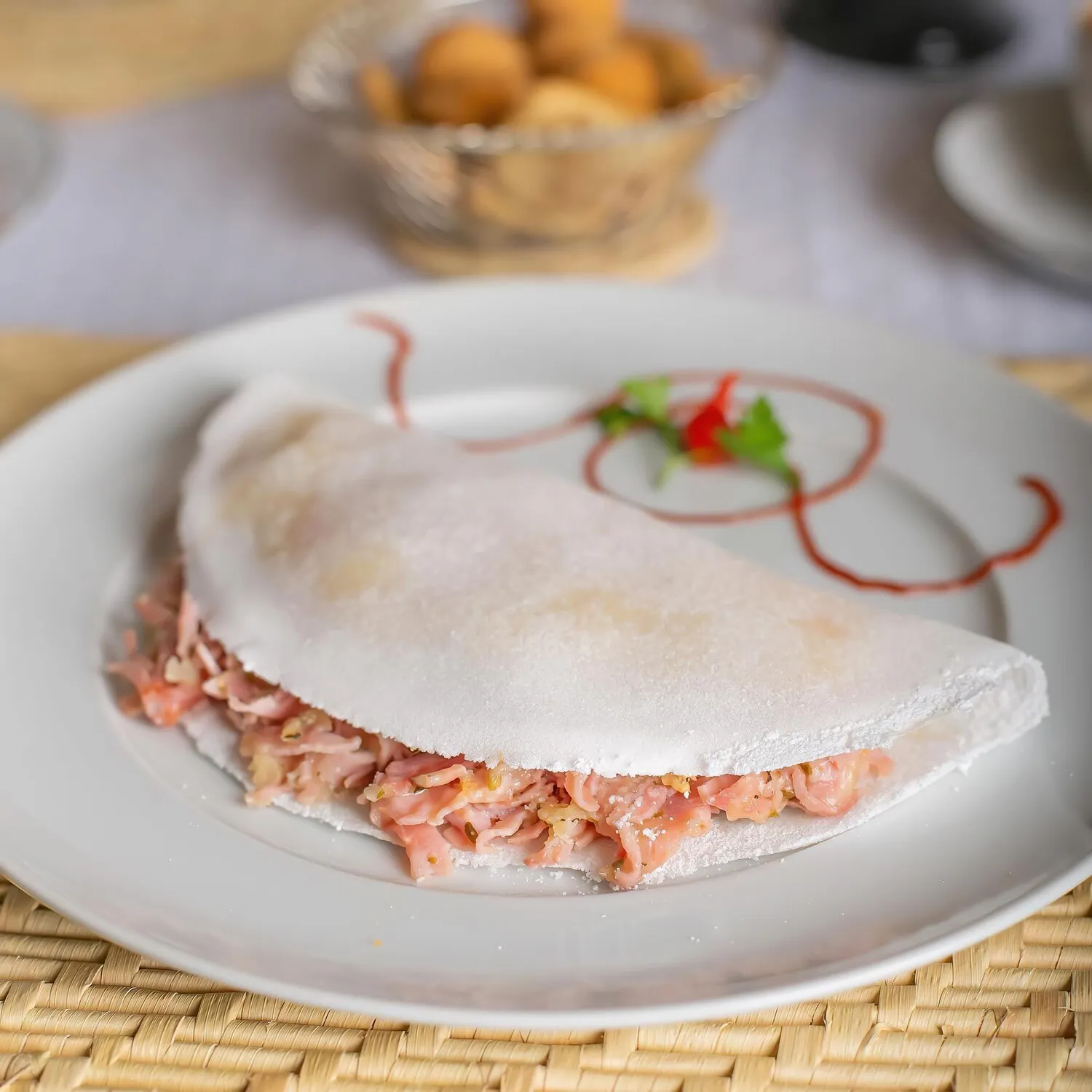
Tapioca
Café Viriato offers a variety of Tapiocas, a traditional Brazilian dish made with cassava starch. It can be filled with sweet or savory ingredients.
Nutrition Facts
* The % Daily Value (DV) tells you how much a nutrient in a serving of food contributes to a daily diet. 2,000 calories a day is used for general nutrition advice.
Café Viriato
Tapioca has indigenous roots in Brazil, predating European colonization. Indigenous communities, particularly in the Northeast region, developed the process of extracting starch from cassava (manioc) and creating flatbreads or pancakes. It served as a staple food and a versatile ingredient. Over time, with the influence of Portuguese colonization and the introduction of other ingredients, tapioca evolved into the diverse dish we know today.
Tapioca holds a significant place in Brazilian food culture, representing both a link to indigenous heritage and a symbol of culinary adaptability. It's widely consumed as a breakfast, snack, or even a light meal, showcasing its versatility and accessibility.
Regional Variations
Different regions in Brazil have their own unique takes on tapioca fillings. In the Northeast, you'll find more traditional and simple fillings, while in other areas, chefs are creating gourmet and innovative combinations.
Street Food Staple
Tapioca is a ubiquitous street food in Brazil, easily found at markets, beaches, and food stalls. It's a quick, affordable, and satisfying option for locals and tourists alike.
Evolving Culinary Scene
Tapioca has also found its way into higher-end restaurants and cafes, where chefs are experimenting with different types of cassava starch and creative fillings to elevate the dish.
Tapioca's flavor profile is incredibly versatile, adapting to both sweet and savory fillings. The tapioca 'crepe' itself has a very mild, slightly earthy flavor, acting as a blank canvas for a wide array of tastes.
The base tapioca has a very neutral, slightly earthy flavor. Savory fillings often include cheese (queijo coalho is a popular choice), shredded chicken, beef, ham, or vegetables like tomatoes, onions, and herbs. Sweet fillings commonly feature condensed milk, coconut, chocolate, various fruits (banana, strawberries), and dulce de leche. The possibilities are endless, allowing for a customized flavor experience based on individual preferences. Regional variations also influence flavor combinations.
Hydration is Key
The tapioca starch needs to be properly hydrated before cooking. Sprinkle the starch with a little water and rub it between your fingers until it feels slightly moist and forms small clumps. This helps it bind together on the pan.
Heat Control
Use medium heat when cooking the tapioca. Too high of heat will burn the bottom before it sets, while too low of heat will result in a soggy, undercooked pancake.
Don't Overfill
Avoid overfilling the tapioca with ingredients. Too much filling can make it difficult to fold and eat, and it can also cause the tapioca to become soggy.
Freshness Matters
Use fresh, high-quality cassava starch for the best flavor and texture. Stale starch can result in a bland and crumbly tapioca.
Explore additional Brazilian dishes and restaurants
Explore BrazilianDiscover top dining spots and culinary experiences in Fortaleza.
Explore FortalezaLearn more about the food culture, restaurant scene, and culinary heritage of Brazil.
Explore Brazil